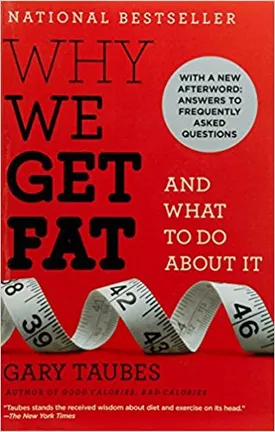Why We Get Fat: And What to Do About It by Gary Taubes
In Gary Taubes’ book, "Why We Get Fat: And What to Do About It", he explains why obesity has become such a rampant health issue. According to Taubes, obesity may be due to an imbalance between energy intake and energy expenditure, but he contends that calories are not solely to blame. In his book, Taubes examines the scientific evidence that suggests the primary cause of obesity may be the intake of the wrong kinds of carbohydrates in the form of “empty” calories – foods with little nutritional value. He explains why these foods lead to weight gain, and he outlines an eating strategy that he claims can help individuals lose weight and keep it off.
In the first part of his book, Taubes discusses the traditional beliefs about why we get fat. He notes that the calories-in/calories-out debate has been around for decades and is still a hot topic today. The conventional wisdom suggests that the human body operates much like a machine and balancing caloric intake with caloric expenditure is paramount for weight maintenance. However, Taubes argues this approach reflects an incomplete understanding of the science of weight gain, and ignores the effects of various dietary components such as insulin, hormones, and genetics.
In the second part of the book, Taubes presents his hypothesis that the key to success in weight loss is to reduce carbohydrates. His argument is based on the fact that the majority of carbohydrates we eat are heavily processed and contain very few nutrients. Taubes calls these carbohydrates “empty” calories, because they do not trigger satiety signals in the brain, leaving people feeling hungry and craving more. Taubes points to scientific studies that suggest an increase in obesity is linked to an increase in “empty” carbohydrate intake.
In the final part of the book, Taubes outlines a plan for avoiding “empty” carbohydrates and eating instead foods that are nutrient-dense, including protein and fat. He argues for making food choices based on both calorie and nutritional content, as well as considering glycemic index and food quality. He also recommends following a sustainable eating plan and incorporating activity and exercise into everyday life.
By the end of the book, readers should have a better understanding of why we get fat and how to prevent and reduce it. Taubes believes it is possible to achieve balance between energy intake and energy expenditure, but he believes this can only be achieved by making smart, informed food choices. He also believes that sustainability is key in any weight loss plan, and he encourages readers to find a suitable and effective eating plan that they can stick to. With Taubes’ help, readers should be well on their way to achieving and maintaining a healthy weight.

